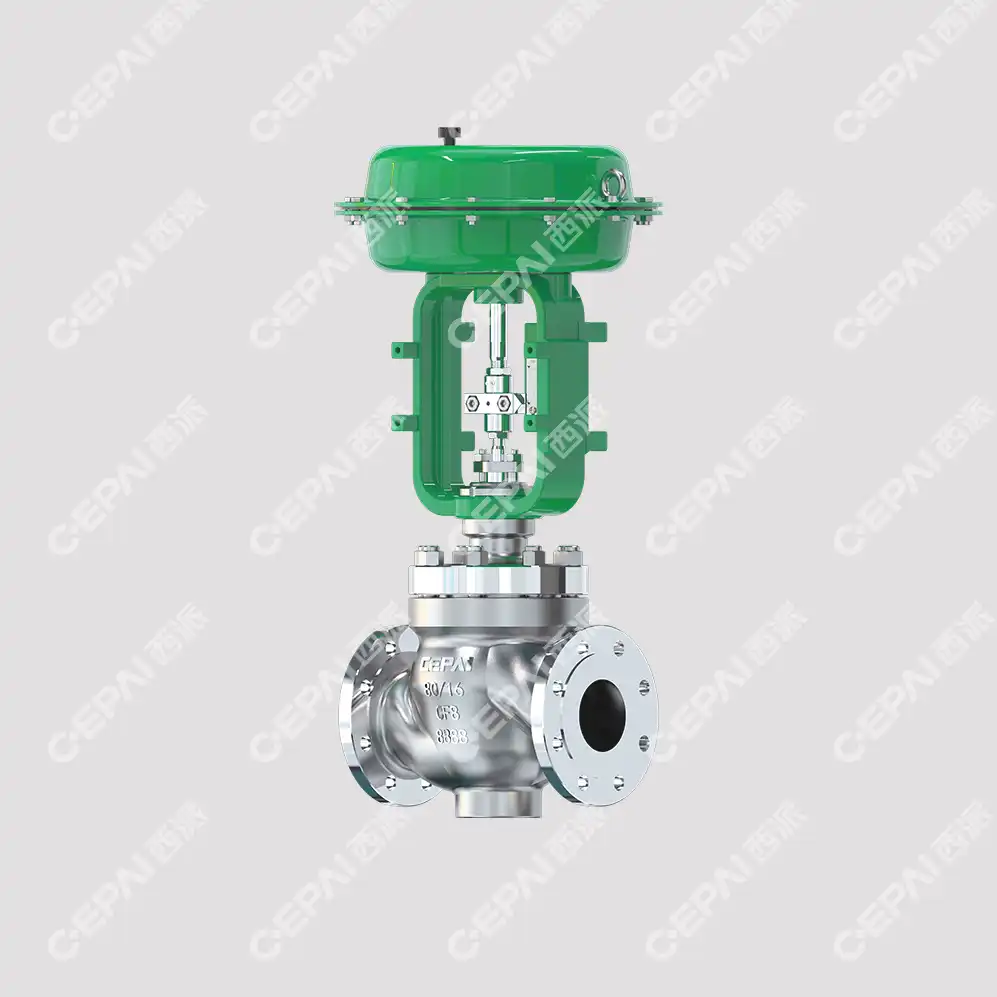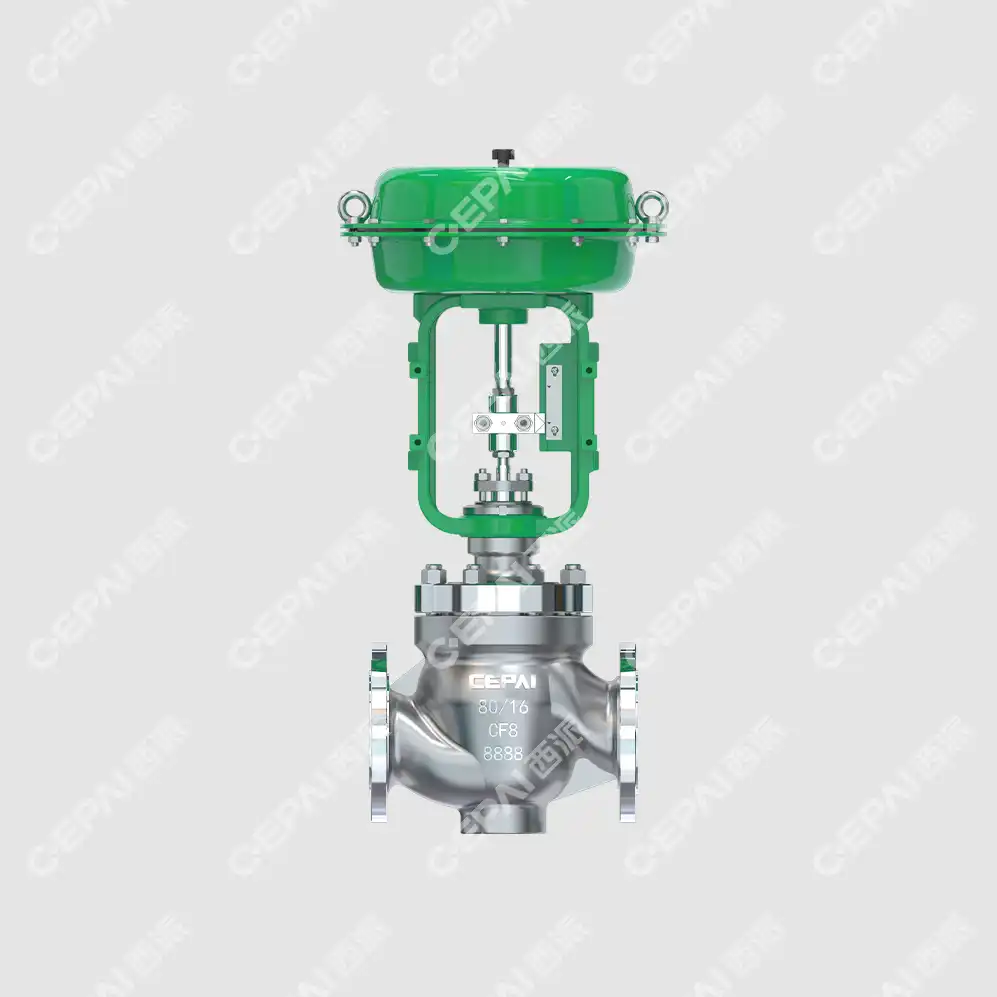Choosing Control Valves for Pharmaceutical Manufacturing Clean Rooms
Pharmaceutical manufacturing clean rooms represent one of the most demanding environments in industrial processing, where maintaining sterile conditions while ensuring precise fluid control is paramount. The selection of appropriate control valves for these critical applications requires careful consideration of contamination prevention, regulatory compliance, and operational reliability. Pneumatic Control Valves have emerged as a preferred solution due to their ability to provide accurate flow regulation while maintaining the stringent cleanliness standards required in pharmaceutical production environments.

Critical Selection Criteria for Clean Room Applications
Hygienic Design Requirements
When selecting control valves for pharmaceutical clean rooms, hygienic design stands as the foremost consideration. The valve construction must eliminate dead spaces, crevices, and surface irregularities that could harbor contaminants or microorganisms. Pneumatic Control Valve systems designed for pharmaceutical applications feature smooth, polished internal surfaces with surface roughness typically maintained below Ra 0.8 micrometers. The valve body geometry incorporates self-draining characteristics to prevent fluid accumulation, while gasket and seal materials are selected from FDA-approved elastomers that resist bacterial growth. These design elements ensure that the Pneumatic Control Valve maintains sterility throughout extended operational periods, reducing the risk of product contamination and supporting continuous production processes.
Material Compatibility and Corrosion Resistance
Material selection for pharmaceutical control valves demands exceptional chemical compatibility and corrosion resistance properties. Stainless steel grades 316L and 316LVM are predominantly specified for their superior corrosion resistance and biocompatibility characteristics. The Pneumatic Control Valve construction typically incorporates electropolished surfaces that provide enhanced corrosion resistance while facilitating thorough cleaning and sterilization procedures. Additionally, specialty alloys such as Hastelloy C-276 or Inconel may be required for specific pharmaceutical processes involving aggressive cleaning agents or extreme pH conditions. The valve seat and trim materials must demonstrate compatibility with pharmaceutical fluids, cleaning solutions, and sterilization processes including steam, gamma radiation, and chemical disinfectants.
Regulatory Compliance Standards
Pharmaceutical manufacturing environments operate under strict regulatory frameworks including FDA, EMA, and cGMP guidelines that directly impact valve selection criteria. Pneumatic Control Valve systems must demonstrate compliance with relevant standards such as ASME BPE for bioprocessing equipment, 3-A Sanitary Standards, and EHEDG guidelines for hygienic equipment design. Documentation requirements include material certificates, design calculations, and validation protocols that support regulatory submissions and facility audits. The valve manufacturer must maintain quality management systems certified to ISO 9001 and ideally ISO 13485 for medical devices, ensuring consistent product quality and traceability throughout the manufacturing process.
Performance Specifications and Control Accuracy
Flow Characteristics and Rangeability
Precise flow control in pharmaceutical applications requires control valves with excellent rangeability and consistent flow characteristics across the operational spectrum. Pneumatic Control Valve systems typically offer rangeability ratios of 100:1 or greater, enabling accurate control at both minimum and maximum flow conditions. The inherent flow characteristic, whether linear, equal percentage, or quick opening, must align with the specific process requirements and control loop dynamics. Modern Pneumatic Control Valve designs incorporate advanced trim geometries that maintain stable flow coefficients and minimize cavitation potential, ensuring consistent performance throughout the valve's operational range. Additionally, the valve sizing calculations must account for pharmaceutical fluid properties including viscosity variations, temperature fluctuations, and potential phase changes that could impact control accuracy.
Actuator Performance and Response Time
Actuator selection significantly influences the overall performance of Pneumatic Control Valve systems in pharmaceutical applications. Pneumatic actuators offer several advantages including inherent safety through fail-safe operation, rapid response times typically less than one second, and excellent power-to-weight ratios suitable for frequent operation cycles. The actuator sizing must provide adequate force margins to overcome process pressures, packing friction, and potential seat loading conditions while maintaining control stability. Advanced pneumatic actuator designs incorporate positioner feedback systems that enhance control accuracy and provide remote monitoring capabilities essential for pharmaceutical process validation and documentation requirements.
Control Loop Integration
Integration of Pneumatic Control Valve systems within pharmaceutical manufacturing control loops requires careful consideration of signal processing, communication protocols, and fail-safe operation modes. Modern control valve systems support multiple communication standards including 4-20mA analog signals, HART protocol, and digital fieldbus networks such as Foundation Fieldbus or Profibus. The control valve positioner must provide accurate position feedback, diagnostic capabilities, and alarm functions that support predictive maintenance strategies. Process control integration includes consideration of cascade control strategies, feed-forward compensation, and advanced control algorithms that optimize pharmaceutical manufacturing processes while maintaining regulatory compliance and product quality standards.
Installation and Maintenance Considerations
Clean Room Installation Requirements
Installation of Pneumatic Control Valve systems within pharmaceutical clean rooms demands specialized procedures and materials that maintain environmental cleanliness standards. Pre-installation preparation includes thorough cleaning and passivation of all valve components using validated cleaning procedures and approved cleaning agents. The installation process must minimize particle generation and contamination introduction, often requiring temporary containment systems and specialized tools. Pneumatic Control Valve installations typically incorporate sanitary fittings such as tri-clamp connections that facilitate easy disassembly for maintenance while maintaining leak-tight seals. Additionally, the installation design must accommodate cleaning-in-place (CIP) and sterilization-in-place (SIP) procedures that are fundamental to pharmaceutical manufacturing operations.

Preventive Maintenance Protocols
Effective maintenance of Pneumatic Control Valve systems in pharmaceutical environments requires comprehensive preventive maintenance protocols that balance operational reliability with contamination prevention. Maintenance scheduling must align with production cycles and sterilization procedures to minimize process disruption while ensuring valve performance. Regular maintenance activities include actuator calibration verification, seal and gasket inspection, and diagnostic testing of control systems. The Pneumatic Control Valve design should facilitate maintenance operations through accessible components and modular construction that enables rapid replacement of wear parts. Documentation of all maintenance activities is critical for regulatory compliance and includes maintenance logs, calibration certificates, and component traceability records.
Validation and Qualification Procedures
Pharmaceutical applications require comprehensive validation and qualification procedures for Pneumatic Control Valve installations that demonstrate consistent performance and regulatory compliance. Installation Qualification (IQ) verifies that the valve system is installed according to specifications and approved drawings. Operational Qualification (OQ) confirms that the control valve operates within specified parameters across its operational range. Performance Qualification (PQ) demonstrates that the valve system consistently performs its intended function within the pharmaceutical manufacturing process. These qualification procedures must be thoroughly documented and include acceptance criteria, test protocols, and deviation investigations that support regulatory submissions and ongoing compliance monitoring.
Conclusion
Selecting appropriate control valves for pharmaceutical manufacturing clean rooms requires comprehensive evaluation of hygienic design, material compatibility, regulatory compliance, and performance specifications. Pneumatic Control Valve systems offer superior advantages through their inherent safety, precise control capabilities, and compatibility with pharmaceutical manufacturing requirements. Success depends on careful consideration of installation procedures, maintenance protocols, and validation requirements that ensure long-term operational reliability while maintaining the stringent quality standards essential to pharmaceutical production.
Looking for the ideal Pneumatic Control Valve solution for your pharmaceutical manufacturing facility? As a leading China Pneumatic Control Valve factory and established China Pneumatic Control Valve supplier, CEPAI Group delivers world-class valve solutions engineered specifically for demanding pharmaceutical applications. Our comprehensive product range positions us as your trusted China Pneumatic Control Valve manufacturer, offering competitive Pneumatic Control Valve wholesale pricing without compromising quality standards.
Discover premium Pneumatic Control Valve for sale options backed by our ISO quality management system and extensive industry certifications. Get detailed specifications and competitive Pneumatic Control Valve price information by requesting our comprehensive Pneumatic Control Valve brochure today. Our pre-sales technical consultation services and customized solution capabilities ensure optimal valve selection for your specific pharmaceutical manufacturing requirements.
Contact our pharmaceutical valve specialists at cepai@cepai.com to discuss your project requirements and receive expert guidance on selecting the perfect control valve solution for your clean room applications.
References
1. Johnson, M.R., Thompson, K.L., and Davis, P.A. "Hygienic Design Principles for Control Valves in Pharmaceutical Manufacturing." Pharmaceutical Engineering, vol. 41, no. 3, 2021, pp. 45-52.
2. Anderson, S.J., Williams, C.M., and Brown, L.K. "Material Selection and Validation Requirements for Bioprocessing Control Systems." Journal of Pharmaceutical Sciences and Technology, vol. 75, no. 2, 2020, pp. 112-125.
3. Rodriguez, A.P., Chen, H.Y., and Miller, J.D. "Performance Optimization of Pneumatic Actuated Control Valves in Sterile Manufacturing Environments." Process Control and Instrumentation, vol. 28, no. 4, 2022, pp. 78-89.
4. Taylor, R.M., Kim, S.H., and Wilson, D.R. "Regulatory Compliance and Validation Strategies for Pharmaceutical Manufacturing Equipment." International Journal of Pharmaceutical Manufacturing, vol. 19, no. 1, 2021, pp. 33-47.

Get professional pre-sales technical consultation and valve selection services, customized solution services.

About CEPAI


